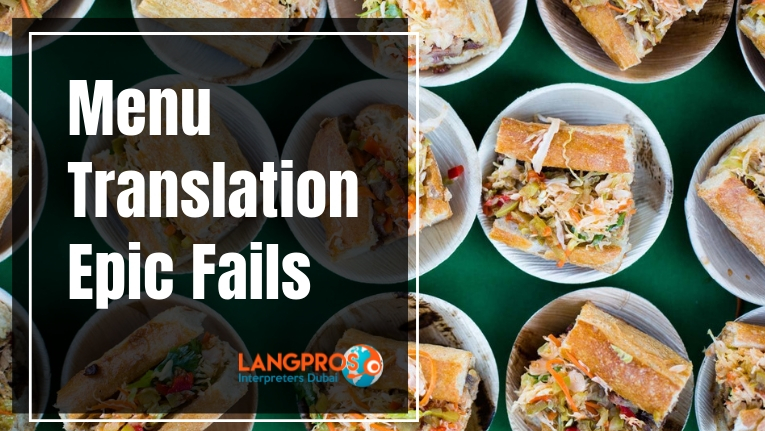While the translation of menus might seem no big deal at first glance, the Internet is full of pictures showing hilarious or disgusting mistakes in word choice. This might surely be related to the fact that menu translations are often carried out by non-professionals who do not know the ins and outs of the trade, but menu translation withholds more challenges than people might think.
Why Menus are Hard to Translate
There are several reasons why translating a menu is a much harder task than what it may look like at first glance:
- Food is probably one of the first things we think about when we want to describe our culture. Being so specific to a certain geographic area or a certain cultural group, food names and ingredients might be hard to translate because of the lack of correspondence in the target language as some ingredients might only be used in certain places.
- Names of traditional recipes might evoke emotions and memories to a native speaker which are hard to render in the translated text, such as the famous madeleine (a traditional French small cake) evoking childhood memories in the protagonist of Proust’s In Search of Lost Time.
- Another tricky issue when dealing with food translation is the different concepts of appetizing across cultures: While “bitter” and “sour” might be off-putting for some eaters, they are sought-after qualities in other cuisines. The dish translation may sound unappealing for the target clients if such cultural differences are not properly addressed by the translator.
- Describing dishes is a challenging task also because menus have limited space, thus translations have to condense all the ideas and imagery above in brief descriptions.
- Restaurants changing the menu frequently may choose not to rely on professional translators and have their menu translated using Google to save money or time. However, this choice can be quite risky: machine translation for such a culturally bounded subject can produce disastrous results which will harm the business, causing more losses than the cost of a professionally translated menu. This is especially true for translations between languages using ideograms such as Chinese and Japanese and languages using the Latin alphabet such as English.
Most of the times, however, translation fails in menus are the result of unprofessional translations, such as in this hilarious examples:
Menu Translation: 3 Useful Tips to Get It Right
After analyzing the many tricky aspects of menu translation, how can we avoid embarrassing mistakes? Let’s see a few aspects we must always keep in mind:
- Keep an eye on style: a professional translator will consider the restaurant’s target costumers and make sure the translation is appealing to them. Menus of high-end restaurants differ greatly from those of bistros in style, and the same goes for the translations: let the menu in a foreign language match the original.
- Keep it short and effective: exotic restaurants might use rare ingredients that do not have a correspondent in the target language, and an inexperienced translator may resort to hyper-detailed descriptions. Being over specific is often off-putting when it comes to the description of a dish that needs to be read in a glance on a menu.
- Keep it creative: restaurant menus convey culture, tradition, and emotions. A professional translation makes sure that not only the dish is translated correctly but also that foreign customers get a sense of the food culture behind the choices of the restaurant.
At Langpros we work with some of the best culinary translators around, who are well aware of the cultural, linguistic, and style issues of menu translation. For every food-related language project, do not hesitate to contact our language experts, or check our website to find out more about our translation process.
